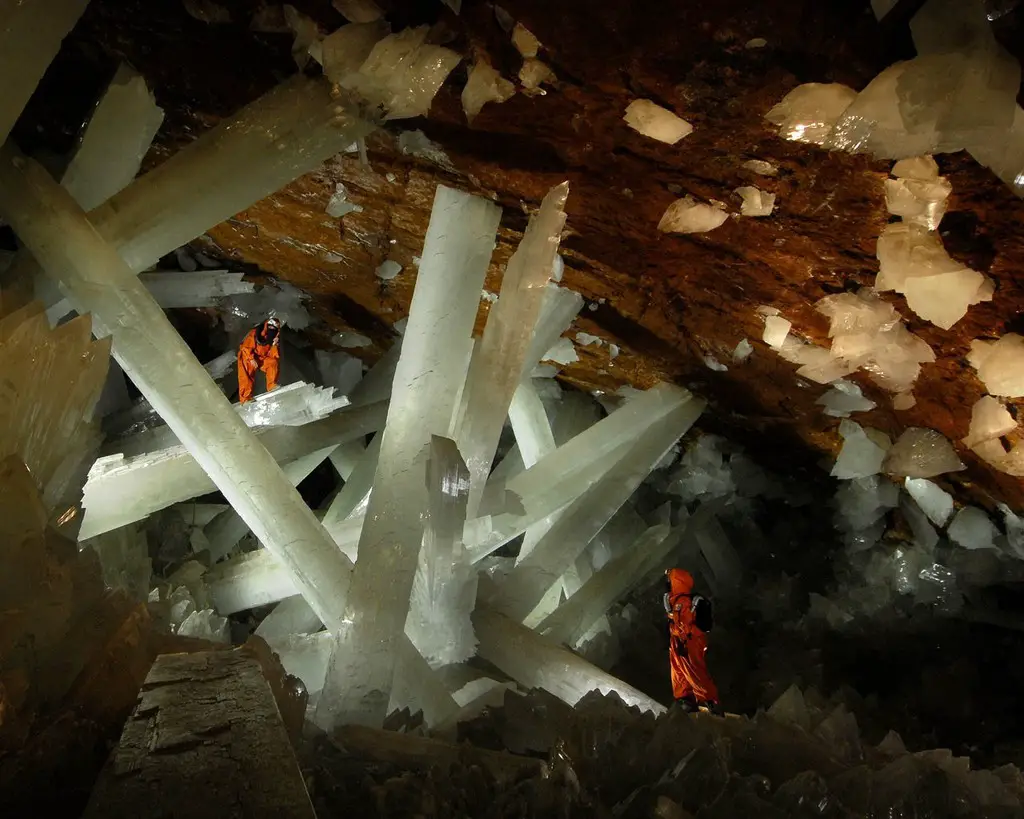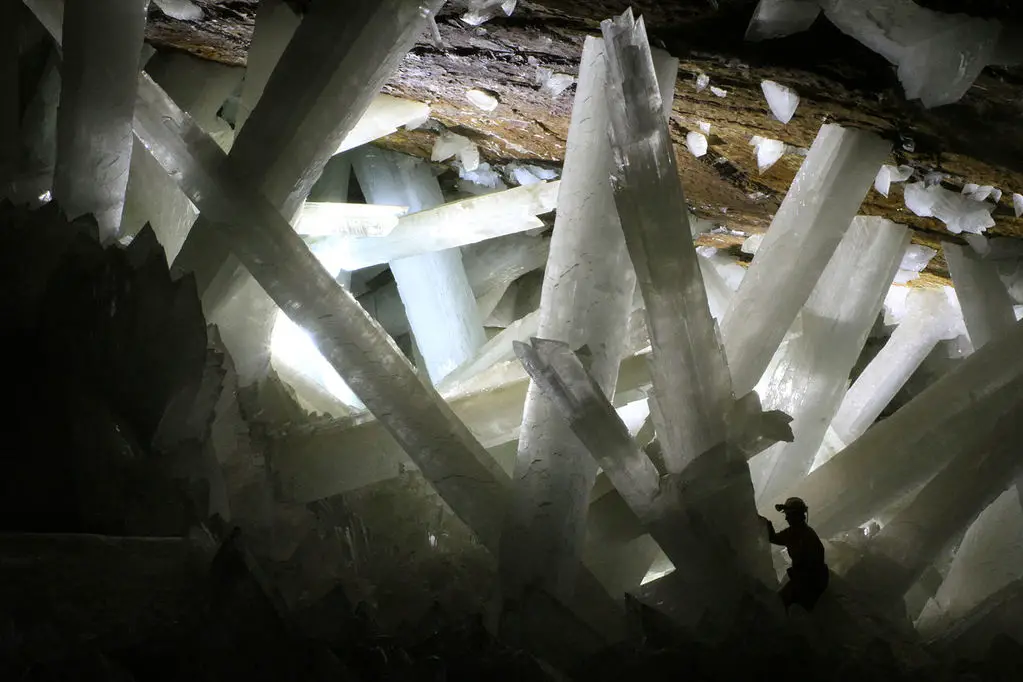The Cave of the Crystals looks like something that should be part of a science fiction movie set, the scene of some mysterious planet, but the cave is right here on Earth in Mexico.
The Cave of the Crystals resides 980 feet (299 meters) below the surface in the state of Chihuahua in Northern Mexico. It was discovered in 2000 when two miners working for the Industrias Peñoles mining company in Naica were excavating a new tunnel in the existing silver and lead mine. They found an underground cavern that contained some of the largest crystal structures on Earth. It wasn’t the first time crystals had been found around the mine, but these were much larger than any others ever discovered.
The size of the selenite crystals, which is a variety of the mineral gypsum, is mind-boggling. The largest crystals measure 39 feet (12 meters), about the length of a school bus, and weigh about 55 tons. The cave is small and measures only 30 feet by 89 feet (9 by 27 meters) and is mostly occupied by the huge, translucent crystals that are very soft and can be damaged by just a fingernail.
But even though the site of the crystals is beautiful and wondrous, the cave is very deadly. Cave temperatures can reach 136 degrees Fahrenheit (58 degrees Celsius) with 90–100 percent humidity. This mix can overwhelm a person without the proper equipment.
Since the surface of the lungs is cooler than the hot, humid air being breathed in, fluid begins to condense inside the lungs. In this type of condition, a person can only survive for about ten minutes. Because of the extreme conditions, explorers must wear a special suit that cools their body along with a mask that delivers dry, cool air. Even with this protective gear, explorers usually limit their time in the cave to only 20 minutes.
Scientists believe the crystals reached their huge size over hundreds of thousands of years. Groundwater filled with calcium sulfate was heated from magma below the cave, and as it cooled, the temperature of the cave remained steady at around 136 degrees Fahrenheit (58 degrees Celsius). This allowed the calcium sulfate to change to selenite, and crystals began to form.
The cave remained undisturbed until 1985 when the mine began pumping water from the underground caverns without knowing they were even there. This stopped the growth of the crystals. The crystals in the cave may have weakened from being exposed to air, and the water may have been providing them support. But scientists have found surprising things in the cave such as microbes of bacteria and archaea, which are single-celled microorganisms that were trapped in the crystals. They were even able to revive them.
Access to the Cave of the Crystals is completely dependent on the pumps of the mine removing the groundwater, but in February 2017, the mine halted operations and the cave once again filled with water. Until the water is removed, scientists won’t know what other secrets the chamber might hold.
Sources: National Geographic, BBC, Telegraph UK, BBC, Live Science



